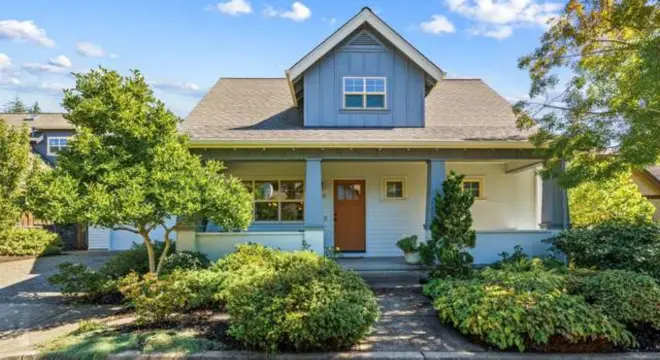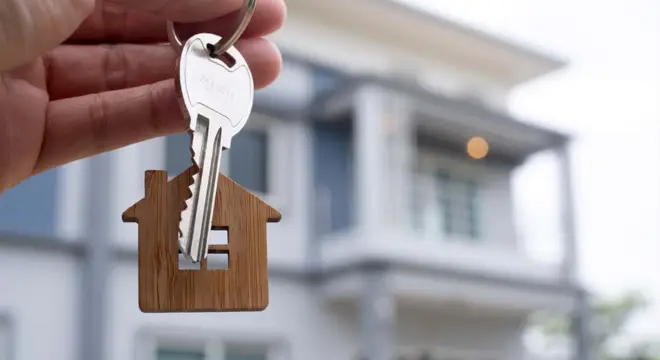California’s $200K Down Payment Help for First-Time Home Buyers: Who Qualifies, How It Works & April 2025 Update
Home prices in California have pushed the dream of owning a home further away for thousands of families — especially first-time buyers. But in 2025, California has stepped in with a game-changing solution: the $200,000 down payment assistance program.
This isn’t just another housing benefit — it’s a rare opportunity that could cover a huge chunk of your home’s initial cost, and it’s already helping families make the leap from renters to homeowners.
But here’s the catch — eligibility rules, funding cycles, and the latest April updates have added new twists. So, if you’ve been considering this program or heard the buzz, now’s the time to get clear answers, straight facts, and real social signals about how it works.
Let’s break it all down👇
What Is California’s $200K Down Payment Help Program?
At its core, this program is designed to support first-time home buyers in California by covering up to $200,000 of their down payment and closing costs.
Unlike traditional loans, this isn’t about monthly repayments right away. It’s structured as a shared appreciation loan, meaning you repay the amount (plus a share of your home’s value increase) only when you sell or refinance the house.
According to CalHFA , this program is part of the Dream For All Shared Appreciation Loan, launched under the California Housing Finance Agency. It aims to help eligible buyers get into homes without the burden of upfront cash.
It’s not a grant — but it’s not a trap either. It’s a supportive loan that grows only if your home gains value, ensuring fairness on both sides.
Real-world Example: If your home value grows by $100K and you took $100K from the program, you’d repay that $100K + 20% of the appreciation ($20K). That’s it.
Who Can Apply in 2025? (Eligibility Criteria)
This $200,000 down payment help sounds great — but not everyone qualifies. California has set strict eligibility rules to ensure it goes to the right people.
Here’s a clear breakdown of who can apply in 2025:
✅ First-Time Homebuyer: You must be a first-time homebuyer, which means you haven’t owned a home in the last 3 years.
✅ California Resident: You need to be purchasing a primary residence in California. Investment properties don’t qualify.
✅ Home Type Restrictions: The property must be a single-family home, condo, or manufactured home. No duplexes or multi-units.
✅ Minimum Credit Score Required: Most lenders require a credit score of 660 or above for this program, but some exceptions may apply.
✅ Education Course Required: You must complete a homebuyer education course approved by CalHFA.
According to CalHFA guidelines, these rules help ensure that support goes to people who actually need a hand buying their first home, not investors or second-time buyers.
✅ Income Limits Apply: Your household income must fall within the program’s set limit. These limits vary by county but are generally below $180,000/year.Check Your County’s Income Limit Here – CalHFA Official Income Limits PDF
How the Program Works Step by Step
Now that you know who qualifies — here’s how the entire process flows from start to finish in 2025:
Step 1: Take the Education Course
Before applying, you must complete a homebuyer education and counseling program. You’ll get a certificate after finishing it — required for loan approval.
Step 2: Apply Through a CalHFA-Approved Lender
You don’t apply directly to the state — instead, you apply through a lender approved by CalHFA to handle Dream For All loans.
These lenders are trained to guide you through the application process, help you understand your eligibility, and ensure all required documents are properly submitted. Find a CalHFA-Approved Lender in Your Area
Step 3: Get Pre-Approved & Start Home Search
Once your lender pre-approves you, you can start shopping for homes. Make sure your chosen property meets the program criteria.
Step 4: Submit Your Documents & Get Approved
Once you choose a home, your lender submits your paperwork to CalHFA for approval. They review your income, credit, property details, and course certificate.
Step 5: Close the Deal & Get Funded
When approved, CalHFA provides the down payment assistance at closing. You can now move into your new home.
April 2025 Updates You Shouldn’t Miss
California’s $200K Down Payment Assistance Program made a lot of buzz when it launched — but what’s new in April 2025?
According to the latest update by CalHFA, the Dream For All Shared Appreciation Loan is still active, but with some important clarifications and limitations:
- Funding availability is limited, and assistance is provided on a first-come, first-served basis through CalHFA-approved lenders.
- The program is not automatically reopened — CalHFA is currently working with the Legislature to determine how and when the next round of loans will be available.
- As of April 2025, there’s no confirmed relaunch date, but discussions are ongoing to allocate more funding in the next budget cycle.
Many homebuyers assumed this program was open year-round, but the reality is: you must wait for CalHFA’s official announcement or work directly with approved lenders to know the next release window.
If you’re planning to apply, stay connected with CalHFA updates and have your documents ready in advance.
✅ Pro Tip: Bookmark CalHFA’s Dream Program Page for real-time alerts and eligibility news.
FAQs from Real Californians (We Answered!)
Since this program gained traction again, comments from NewsBreak readers and other platforms have shown just how many Californians are confused or curious about key details. So we pulled real concerns, and here’s what you need to know:
Q: Is this loan forgivable, or do I have to pay it back?
A: No, it’s not a grant or a free subsidy. This is a shared appreciation loan, meaning you won’t pay interest monthly — but when you sell, refinance, or transfer ownership of your home, you must repay the original amount plus a share of your home’s increased value.
According to CalHFA, the appreciation share could be 15% or 20%, depending on loan type.
Q: What if I sell my house later or refinance?
A: The repayment is triggered. Whether you refinance your mortgage, sell your home, or even transfer the property’s title, the loan becomes due along with the appreciation share.
Q: Can non-citizens or immigrants apply?
A: You must have legal residency status and meet CalHFA’s general requirements. DACA recipients may qualify in some cases, but undocumented individuals are not eligible for this state-supported program.
Q: Is this available for people outside California?
A: No. This program is strictly for California residents looking to purchase their first home within the state.
Q: What happens if I pass away or live in the home for decades?
A: If you live in the home long term and never sell, the repayment is deferred until a triggering event like refinancing or transfer upon death. Estate heirs would be responsible at that point.
Q: Is it true only Spanish-speaking or low-income families benefit?
A: No. Anyone who meets the income limits, buyer status, and residency criteria can apply — regardless of ethnicity or language. There’s no ethnic preference or restriction.
Top 3 Misconceptions Californians Still Believe
❌ “You’ll never have to pay it back.”
✅ You will — it’s a deferred loan, not a gift. Repayment kicks in when you sell, refinance, or transfer the property.
❌ “Only citizens can apply.”
✅ Not true. Legal U.S. residents with valid immigration status may also be eligible under CalHFA rules.
❌ “The government owns a part of your house.”
✅ Nope. You retain full ownership. The state simply shares a portion of your home’s appreciation later — you’re still the legal owner.
What Social Media Is Saying (Real Reactions)
Californians are voicing their thoughts online — and the reactions range from hopeful to frustrated.
“My loan officer told me that the program was not renewed for 2025. Apparently, it wasn’t in the budget this year.”
— u/horsecreature on RedditView the full discussion on Reddit
Our Take: Many homebuyers are in a holding pattern, unsure when funding will be available again. It shows how crucial clarity and timing are — especially when demand is sky-high.
How to Apply for This Program
Applying for California’s $200K down payment help isn’t complicated—but you must go through the right channels to avoid delays or scams.
Step-by-Step Application Guide:
Step 1: Confirm You’re Eligible
Before anything, double-check that you meet income, location, and first-time homebuyer requirements.
We’ve shared the eligibility link above
Step 2: Find a CalHFA-Approved Lender
You don’t apply directly on the CalHFA site—instead, you apply through one of their approved lenders.
These lenders help you with paperwork, loan processing, and explain repayment terms. Official List of Lenders
Step 3: Gather Your Documents
Your lender will ask for:
- Proof of income (W-2s, tax returns)
- Employment verification
- Credit history (usually 660+ is preferred)
- Bank statements
- Property details, if you’ve chosen a home
Step 4: Application & Review
Once everything’s submitted, the lender reviews and applies on your behalf. If approved, the funds are reserved until the purchase closes.
⚠️ Watch Out for Scams
Some unofficial websites and “consultants” are pretending to help with Dream For All but charge unnecessary fees or collect your data.
🛑 Red Flag: Any site that asks for upfront payment, isn’t listed on the CalHFA website, or doesn’t connect you with an official lender.
🟢 Always start at: calhfa.ca.gov
🙋♂️ What do you think about California’s $200K program?
Do you feel it really helps or just adds more debt pressure later?
Share your thoughts in the comments below — we’re featuring the best responses in our next update!
📌 Your experience or doubt might help another first-time buyer — don’t hold back!
Final Thoughts: Should You Apply?
If you’re a first-time homebuyer in California feeling overwhelmed by soaring home prices and hefty down payments, this $200K Down Payment Help program could be your golden opportunity.
It’s not a free ride—but it’s one of the most generous homeownership support options available from the state in 2025. For those who qualify under the income limits and plan to live in the home long-term, this program offers a serious head start in one of the most competitive housing markets in the country.
However, this opportunity won’t last forever. The funding is limited and tends to be distributed in phases—meaning that if you wait too long or miss the current round, you could end up waiting months (or longer) for the next window to open. We’ve seen plenty of people in the past miss out simply because they delayed taking action. Don’t let that be you.
If you’re looking for a simple breakdown of the program before the updates, check out our original guide.
At BuildLikeNew, we believe that making smart home decisions starts with clarity. That’s why we’ve broken down this complex program into everyday language.
If you found this helpful and want to stay ahead on future housing assistance updates, simplified homeownership guides, or real estate policy changes, make sure to follow BuildLikeNew.com. We’re here to help you take confident steps toward owning your own space in California—without the confusion.
Disclaimer:This article is intended for informational purposes only. While we strive to provide accurate and up-to-date details, programs like CalHFA’s Down Payment Assistance are subject to change based on government decisions and funding availability.
Readers are advised to consult official sources or speak with a CalHFA-approved lender for personalized guidance. BuildLikeNew does not offer financial, legal, or real estate services.


